Save your summer skin with our guide to playing it safe in the sand, surf and great outdoors.
Warm weather is loved by many around the world because of the ability to play outside in the sand and surf. Yet all this time in the great outdoors can lead to some serious consequences for your skin. Take a look at our roundup of skin conditions to get all your warm weather skin questions answered!
Dangerous Plants

A warm weather stroll can take a painful turn if you encounter certain foliage known to damage skin. It is important to learn the signs of poisonous plants as well as the damage they can leave on exposed skin.
Poison Ivy and Poison Oak
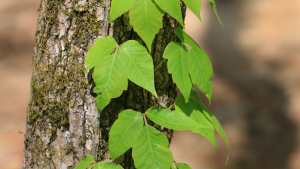
The poison ivy plant is a low hanging vine or shrub that can grow in most climates. Its leaves are grown in groups of three.
Direct contact with any part of the plant can cause skin irritation within a few hours. Often those exposed will experience painful and itchy blisters with red swollen skin. This reaction is caused by the exposure of the skin to an oil the plant releases called urushiol.
In most cases, the skin is able to heal itself in a few weeks. Often the symptoms are able to be managed with home remedies such as cold compresses, oatmeal baths, and over the counter creams such as calamine lotion.
In rare cases, a severe reaction may occur. If you suspect the area is becoming infected or the symptoms are not subsiding with home remedies you should contact your health care professional.
Wild Parsnip
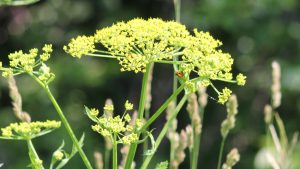
Wild parsnip loves to bloom in sunny areas like the side of a country road or along well-walked trails. This plant is known for its large yellow blooms and thick stem. This can be a tempting plant for little ones to pick and unknowingly expose their skin.
Direct contact with the sap of this plant, along with exposure to sunlight can cause burns to exposed skin that range from mild irritation to skin discoloration that can last for years. Skin will usually become red and blistered about 24 hours after exposure.
Irritated skin can be soothed with cool washcloths or moisturizers. In cases of persistent irritation contact your healthcare provider.
Stinging Nettle
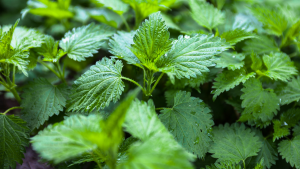
A well-suited name for the pain associated with an encounter with this week. While the stinging nettle does offer medicinal value, it should not be touched without wearing gloves.
The stinging nettle can grow between three and four feet and likes to grow in clumps. It can be identified by its sharp bristles that grow along its stem and on the underside of its leaves.
It prefers well-aerated soil so it can often be seen growing along the road, but will also pop along in gardens. A chance encounter with this weed will likely leave exposed skin in pain and with a rash.
The itchy rash experienced by this encounter is a result of This reaction is the result of nettles’ toxic combination of formic acid, histamine, acetylcholine, and 5-hydroxytryptamine.
An intensely itchy rash will develop within an hour of exposure. The rash may be acute or chronic, able to be handled with home remedies, or require medical attention. Some people find the rash affects their ability to sleep.
Insect Concerns
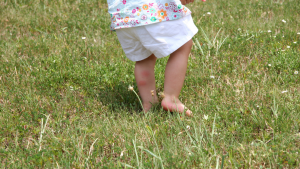
Spending time in the great outdoors may be great for the soul, but it can be tough on the skin. Not only do we need to concern ourselves with sunscreen, and avoiding poisonous plants but we can also get eaten alive by bugs!
Mosquitoes
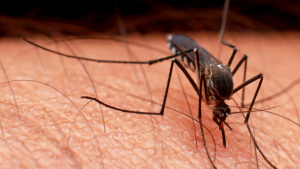
Mosquitoes can give you much more than an itchy bite. West Nile Virus is the leading cause of mosquito-borne illness in the United States. It has been transmitted to people in 48 of the 50 United States, in Africa, Europe, West and Central Asia, Canada, and the Middle East
Many people infected with West Nile do not experience severe symptoms. Approximately one in five people infected with the virus will experience a fever or other mild symptoms. One in approximately 150 people will experience severe symptoms that can be fatal.
There is currently no vaccine or treatment available to combat West Nile Virus. The risk of West Nile Virus is increased during the mosquito season and wearing long sleeves and spray to deter bugs is your best defense.
The Zika virus is also spread through the bite of an infected mosquito. This map by the CDC shows the areas that are at risk for contracting the virus.
The majority of those who get the Zika virus will only experience mild symptoms. Extreme symptoms requiring hospitalization is rare. The virus can cause devastating birth defects if contracted during pregnancy.
There is currently no cure or vaccine for the Zika virus.
Ticks
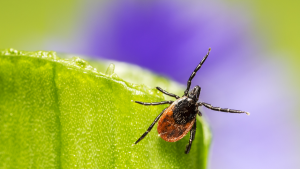
Ticks are not only hard to spot, but can also carry a dangerous bacteria called Borrelia burgdorferi that can cause Lyme Disease.
Ticks can be hard to spot because they can be as small as the end of a pin. Ticks love to live in tall grass and on shrubs. They are unable to jump but will attach to a human host when they brush by.
Tick bites are often painless and not likely to be immediately noticed. Fortunately, ticks must feed on their host for 24 hours to pass on the bacteria that can cause Lyme Disease.
Lyme disease often starts with a red ‘bulls-eye’ rash around the bite area. This is often accompanied by flu-like symptoms, joint aches, and facial muscle paralysis.
Fortunately, Lyme Disease is very treatable, especially if caught early.
Swimming Skin Concerns

The warm sun makes the local swimming spot the perfect place to spend your time outdoors. Diving into the cool waters provides much-needed relief from the sun’s rays, but could also expose your skin to some pretty serious conditions.
Molluscum Contagiosum
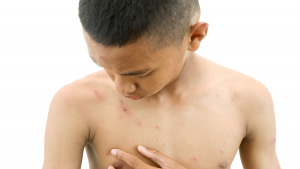
While no concrete scientific evidence exists to link the spread of molluscum contagiosum, a viral skin infection, with the use of a public pool, there is a lot of anecdotal evidence. Molluscum can be found in up to 10 percent of the pediatric population and is spread through direct contact of infected skin and objects.
So while you may not be infected by sharing a pool with an infected person, you could pick it up by sharing the same towel or water toys. It can be difficult to pinpoint where the virus was picked up because it can take between 2 weeks and six months for the bumps to form after exposure.
Molluscum is more prevalent in children but can affect adults as well.
Signs and Symptoms of Molluscum
- Raised flesh colored bumps-often have a small pin mark or indentation
- Itchy, inflamed skin
- Bumps are often on the face, armpits, or on the top of the hand
If you suspect molluscum it is important to avoid scratching the area as the virus will spread once the bumps are broken. Contact your healthcare provider and avoid sexual contact if you have bumps in the genital area.
Swimmer’s Itch

Many may choose to swim in natural bodies of water to avoid unnecessary exposure to chemicals, but may instead pick up something even more sinister-swimmer’s itch. Also known as cercarial dermatitis, swimmer’s itch is an allergic reaction to certain microscopic parasites that infect some birds and mammals.
While the parasites prefer birds and mammals, they will sometimes burrow into the skin of a human. The good news is that humans are not suitable hosts for the parasites and they will soon die. Unfortunately, they will still leave behind a rash.
Swimmer’s itch is usually easily treated using home remedies such as:
- Applying a baking soda paste to the area
- Taking an oatmeal bath
- Apply an anti-itch cream
- Apply a cool compress
Scratching the area could cause the area to become infected. If home remedies are not treating the rash your healthcare provider may prescribe medication to treat the area.
Folliculitis
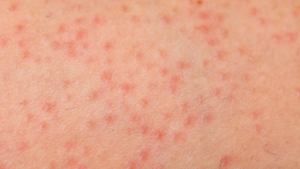
We all want flawless summer skin, but engaging in summer activities can encourage annoying red bumps on the skin. Folliculitis is often mistaken for acne because it causes red or flesh-colored bumps that may or may not be filled with pus.
The bumps occur when the hair follicle becomes inflamed. This inflammation is often due to the damage that can be caused by things like improper shaving techniques, tight clothing, friction, and wearing wet clothing or bathing suits.
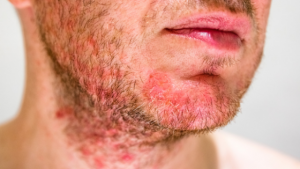
Many people shave more often during bathing suit season to achieve a hairless look, but pushing too hard on your razor and other poor shaving techniques can leave the follicles damaged and vulnerable to infection.
Tight clothing, sweat, and wet bathing suits can all encourage bacterial growth as bacteria thrive in warm, wet places.
Folliculitis can be difficult to treat because it is often mistaken for acne and so it is not treated properly. Proper shaving techniques, showering after working out, and changing out of wet clothing and bathing suits can all help to avoid folliculitis.
Related: Folliculitis: symptoms, prevention and treatment options
Hot Weather Skin Conditions

While warm weather may lead some to expose more skin, it can also exacerbate existing skin conditions. That means that even though it is warm enough to wear your favorite two-piece, your skin’s condition may make you want to opt for a cover-up instead.
Heat Rash
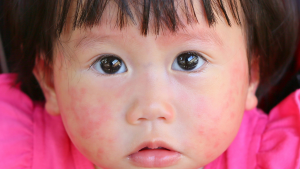
Warm weather can raise the risk of heat rash for babies and children. This type of rash is caused when sweat becomes trapped under the skin irritating little bumps or blisters on the skin. This condition can happen to people of any age during hot and humid conditions.
Heat rash occurs more often in babies and young children due to their small pore size. Excessive sweating can lead to blocked pores and the resulting rash. The rash is often caused by friction. It will develop in areas where the skin rubs together. In babies, this can often be in the folds of the neck, thighs, arms, or anywhere that the clothing fits snugly.

Heat rash does not only occur in hot weather. Dressing a baby too warmly can also bring on excessive sweating and blocked glands. As heat rash prevents sweat from exiting the body, it can lead to dizziness and nausea.
Miliaria crystallina is a common form of heat rash in babies and is generally mild. It is characterized as small bumps filled with clear or whitish liquid. These bumps are essentially bubbles filled with sweat. This type of rash is generally not itchy and will clear up without medical intervention.
Miliaria rubra is a heat rash that is associated more with adults than children and is more likely to be uncomfortable as it often more deeply penetrates the skin’s outer layer.
Heat rashes will generally disappear after a few days of staying out of the heat. Babies may appear to be crankier or even have trouble sleeping when they have a heat rash.
You can encourage healing by:
- Use a mild soap to cleanse the area
- Avoid any lotions or powders that can further clog pores
- Keep skin dry and use a fan to keep baby cool
- Allow baby to spend some time naked to avoid friction from clothing
If the rash persists beyond a few days or your child develops a fever it is important to seek medical attention right away.
Sunburn
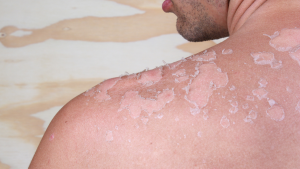
While a sunburn may seem like a short and painful consequence of too much time in the sun, it can contribute to some serious consequences.
Each sunburn your skin receives increases your risk of developing skin cancer. The average person’s risk for melanoma (a common type of skin cancer) doubles if he or she has had more than five sunburns.
Sadly, one in five Americans will develop skin cancer by the age of 70, and more people are diagnosed with skin cancer each year than all other types of cancer combined.
Using sunscreen with an SPF of 15 or higher daily will reduce your risk of melanoma by 50 percent. In the summer a much higher SPF is recommended, along with regular reapplications after activities like swimming.
Babies should be kept in the shade, and wear hats, sunglasses, and/or SPF-protective clothing. Speak to your doctor before applying sunscreen to a child under six months of age.
Acne
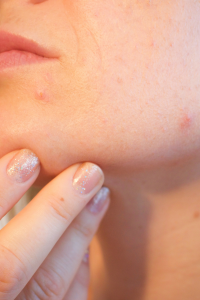
While many falsely believe that the sun’s rays can clear up their skin, it often has the opposite effect.
Excessive sweat can cause the pores to become clogged and make breakouts even worse. Some sunscreens may contain ingredients that can clog pores, so it is important to use a sunscreen that is designed for oily or acne-prone skin.
Acne cleansers with salicylic acid may help to absorb excess oil, but can also leave skin more sensitive to sunlight.
If your acne is appearing on your body it could be folliculitis, which is an inflamed hair follicle, rather than acne. They are often treated differently.
Save Your Skin

When the mercury rises so does the risk of exposed skin in the summer. Warm weather can inspire you to show a little more skin but don’t forget to take the measures necessary to protect yourself. Protecting the skin you’re in can lead to a happier and healthier summer.
Unsure the cause of your skin concerns? Connect with us right now!







